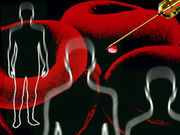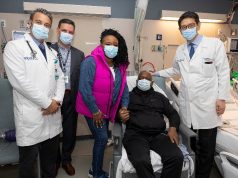Unique characteristics ID’d in peripheral blood cells of simultaneous liver-kidney transplant recipients
MONDAY, April 30, 2018 (HealthDay News) — Simultaneous liver-kidney transplant recipients’ peripheral blood cells have unique phenotypic and functional characteristics that are associated with donor-specific hypo-alloresponsiveness, according to a study published online April 12 in Kidney International.
Timucin Taner, M.D., Ph.D., from the Mayo Clinic in Rochester, Minn., and colleagues measured donor-specific alloresponsiveness and phenotypes of peripheral blood cells after the first year to characterize the host alloimmune response in 28 patients who underwent simultaneous liver-kidney transplantation. Values were compared with those of 61 similarly immunosuppressed solitary kidney recipients or 31 liver allograft recipients.
The researchers found that, compared with solitary kidney transplant recipients, simultaneous liver-kidney transplant recipients had lower overall frequency of circulating CD8+, activated CD4+, and effector memory T cells despite a significant overlap. Also compared with solitary kidney recipients, simultaneous liver-kidney transplant recipient T cells had a significantly lower proliferative response to the donor cells (11.9 versus 42.9 percent); their response to third-party cells was unchanged. Simultaneous liver-kidney transplant recipients had significantly lower frequency of interferon-gamma-producing alloreactive T cells than solitary kidney transplant recipients. Simultaneous liver-kidney transplant recipient circulating blood cells had smaller alloreactive CD4+ and CD8+ compartments.
“The phenotypic and functional characteristics of the circulating blood cells of the simultaneous liver-kidney transplant recipients resembled those of solitary liver transplant recipients, and appear to be associated with donor-specific hypo-alloresponsiveness,” the authors write.
Abstract/Full Text (subscription or payment may be required)
Copyright © 2018 HealthDay. All rights reserved.








